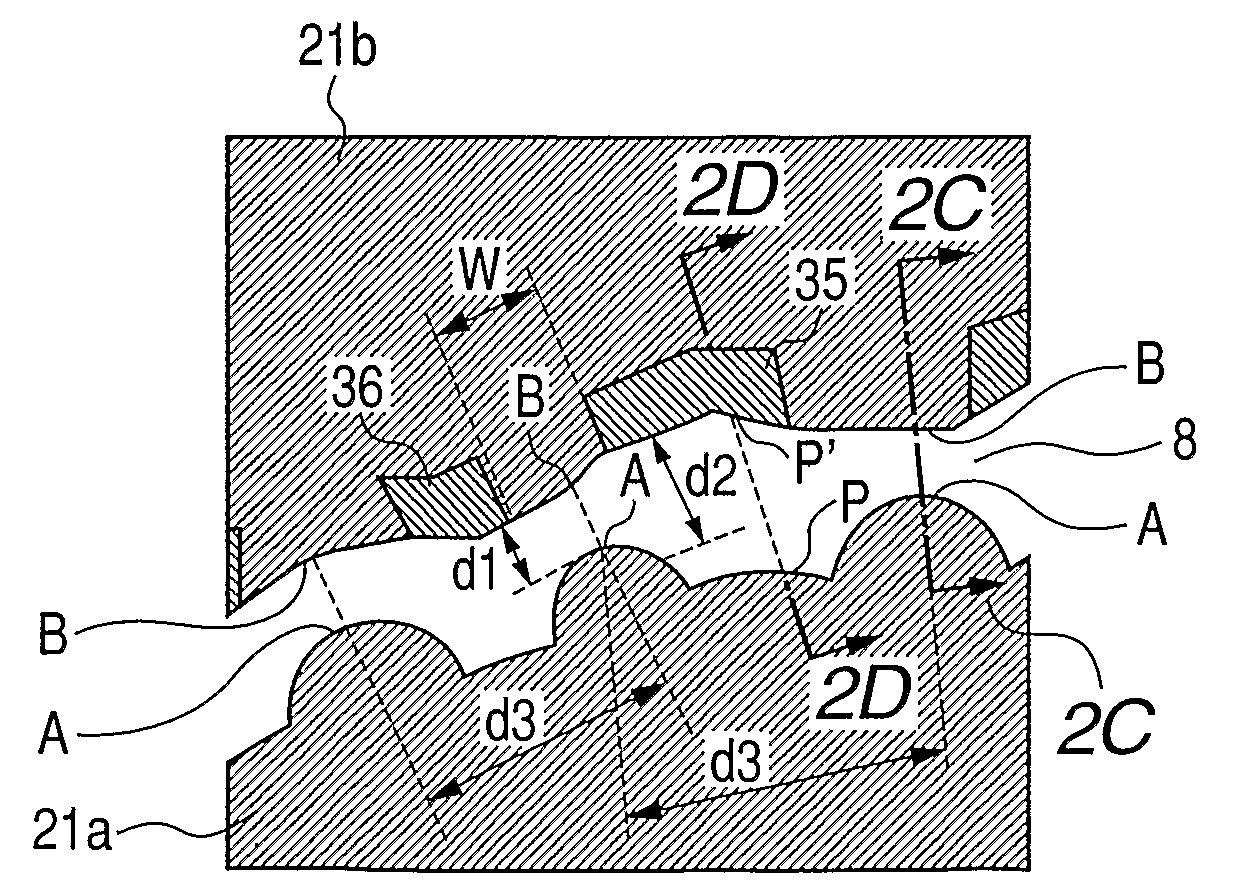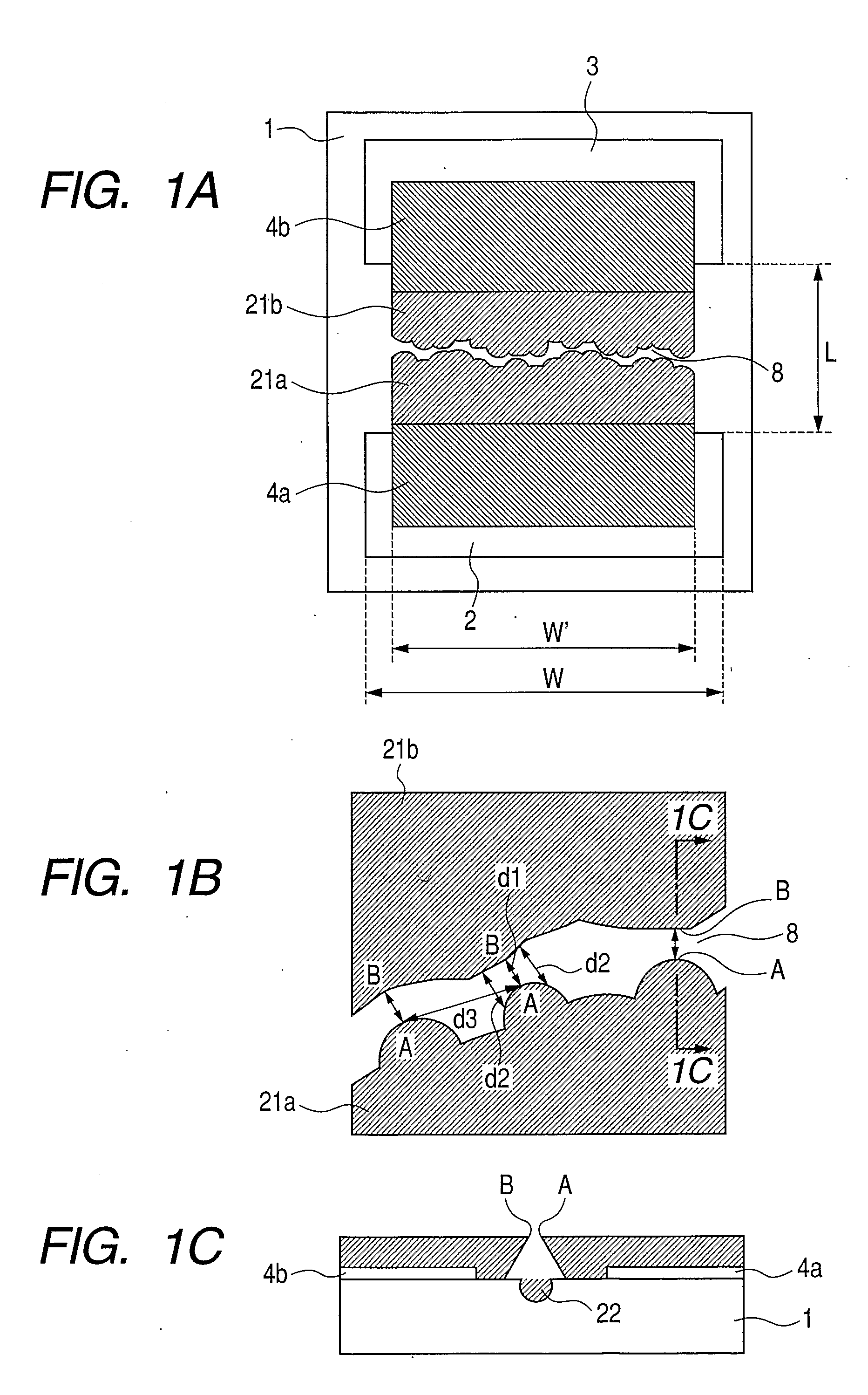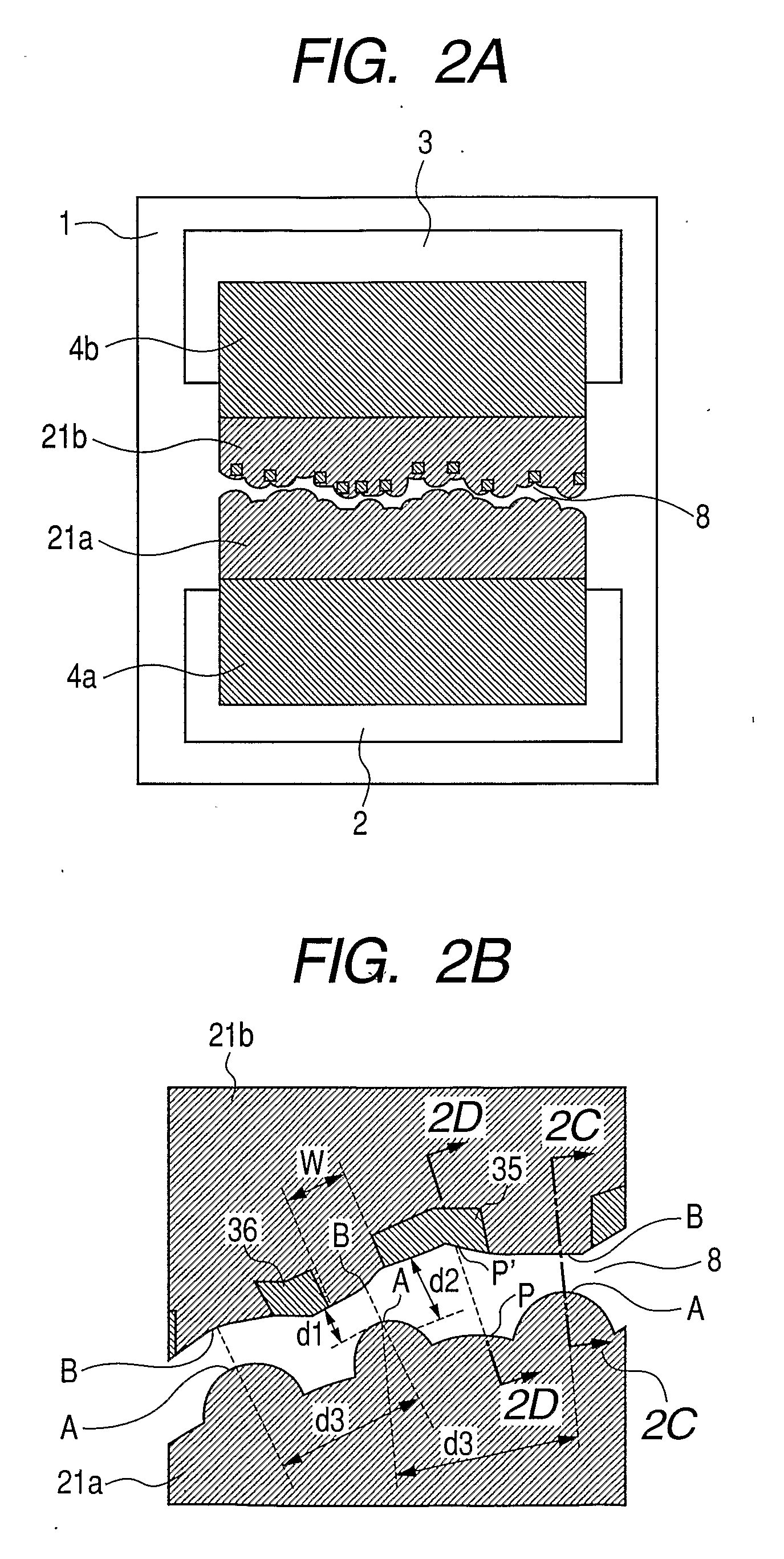Electron-Emitting Device, Electron Source Using the Same, Image Display Apparatus, and Information Displaying and Reproducing Apparatus
- Summary
- Abstract
- Description
- Claims
- Application Information
AI Technical Summary
Benefits of technology
Problems solved by technology
Method used
Image
Examples
example 1
[0177]The basic structure of an electron-emitting device according to this example is similar to that illustrated in FIGS. 1A to 1C. The basic structure of and a method of manufacturing the device according to this example are described in the following with reference to FIGS. 1A to 1C, 3, and 4A to 4D.
(Process-a)
[0178]First, photoresist shaped correspondingly to the pattern of the auxiliary electrodes 2 and 3 was formed on the cleaned quartz substrate 1. Then, Ti at the thickness of 5 nm and Pt at the thickness of 45 nm were deposited in this order by electron beam vapor deposition. The photoresist pattern was dissolved away by organic solvent, the Pt / Ti deposition film was lifted off, and the first and second auxiliary electrodes 2 and 3 in opposition to each other with a length L of 20 μm therebetween were formed. The width W of the auxiliary electrodes 2 and 3 (see FIGS. 1A to 1C) was 500 μm (FIG. 4A).
(Process-b)
[0179]After an organic palladium compound solution was spin coated ...
example 2
[0207]This example is a further preferable example of the present invention.
[0208]In this example, electron-emitting devices were manufactured in the same way as that in Example 1 except that Process-e and Process-f of Example 1 were modified as described in the following. Thus, here, Process-e and Process-f will be described.
(Process-e)
[0209]Following Process-e, in order to carry out the activation process, acrylonitrile was introduced into the vacuum chamber through a slow leak valve. Then, the pulse voltage having the waveform illustrated in FIG. 8B was applied between the auxiliary electrodes 2 and 3 with T1 being 1 msec, T1′ being 0.3 msec, and T2 being 5 msec. The “activation” process was curried out with the first auxiliary electrode 2 fixed at the ground potential and pulse voltage having the waveform illustrated in FIG. 8B was applied to the second auxiliary electrode 3.
[0210]After 120 minutes lapsed from the beginning of the activation process, it was made sure that the gr...
example 3
[0238]In this example, the electron-emitting device illustrated in FIGS. 27A to 27C was manufactured using electron beam irradiation. Since Process-a of this example is the same as Process-a of Example 1, the description thereof is omitted in the following.
(Process-b)
[0239]Next, the substrate 1 having the auxiliary electrodes 2 and 3 formed thereon was disposed in the measurement / evaluation apparatus illustrated in FIG. 3 (with an electron beam irradiating means (not shown)). Then, the measurement / evaluation apparatus was evacuated by a vacuum pump until the vacuum reached 1×10−6 Pa. After that, acrylonitrile was introduced into the vacuum chamber through a slow leak valve. Then, the electrodes 2 and 3 were set at the ground potential and electron beam irradiation was carried out so that the first and second carbon films 21a and 21b as illustrated in FIGS. 27A to 27C were formed. The acceleration voltage of the electron beam was 5 kV and the current was 10 μA. The width W′ of the ca...
PUM
 Login to View More
Login to View More Abstract
Description
Claims
Application Information
 Login to View More
Login to View More - R&D
- Intellectual Property
- Life Sciences
- Materials
- Tech Scout
- Unparalleled Data Quality
- Higher Quality Content
- 60% Fewer Hallucinations
Browse by: Latest US Patents, China's latest patents, Technical Efficacy Thesaurus, Application Domain, Technology Topic, Popular Technical Reports.
© 2025 PatSnap. All rights reserved.Legal|Privacy policy|Modern Slavery Act Transparency Statement|Sitemap|About US| Contact US: help@patsnap.com



